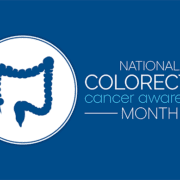Tips for a Successful Recovery after Ostomy Surgery
By Diana Gallagher, MS, RN, CWOCN, CFCN – Facilitator for the NWA Ostomy Support Group
updated 11/3/2022
For many, ostomy surgery is lifesaving but their initial feelings on living life with an ostomy are negative. For individuals with years of unresolved incontinence or inflammatory bowel disease, however, life after surgery is frequently viewed as a positive improvement. For them, an ostomy is the promise of a return to a normal life.
As you prepare for surgery, or recover from emergency surgery, the following are important tips to help you transition into your new life and embrace living with an ostomy.
Select a surgeon with valuable experience in the type of surgery that you are facing. General surgeons as well as specialty surgeons can perform ostomy surgery. Specialty surgeons are those who have completed additional education, training, and fellowships within the specialty. These surgeons will be identified as Colorectal or Urology Surgeons. You can find a local physician through the website for the American Society of Colorectal Surgeons or by contacting the American Urological Association.
See an Ostomy Nurse. BEFORE surgery, your surgeon may refer you to a specialty nurse, like a Certified Wound Ostomy and Continence Nurse (CWOCN). If not, you will need to find a specialty nurse. This nurse will help ease your transition into living with an ostomy. Although education may be provided during your hospital stay it can be difficult to focus and remember because of anesthesia, surgical pain and stress. Your ostomy specialist will provide comprehensive education including practice pouch changes before surgery. In addition, he/she will identify and mark the best location for your ostomy. This is important because during surgery it is difficult for your surgeon to know where the waistband of your pants sits, where creases or irregularities exist and other special considerations to consider when selecting that optimal site.
Attend a United Ostomy Associations of America (UOAA) affiliated support group (ASG) meeting in your community if possible. You may think that you do not need a support group or feel that you are the type of person who does not feel comfortable in a group setting. Put those feelings aside; listening in the beginning is a good start. Join your local group, even if you don’t initially find someone your age with a similar story, there is a lot to learn. UOAA affiliated support groups are truly one of the BEST places to obtain the necessary education, helpful hints, support, and resources and many groups offer online meetings. Don’t feel that you are alone.
Determine which supplies will work best for you. Learn about the different ostomy pouching systems. In the beginning, you will most likely receive sample products from a number of companies. It is helpful to keep the 2 piece products from each manufacturer separated; wafers from one company will not necessarily snap onto a pouch from another company. The sampling program will help you try a variety of products to learn which ones work best for you.
Order your regular supplies. Once you know what you like best, an order can be placed through a distributor. There are countless distributors to choose from and depending on insurance, your supplies can be delivered monthly or every three months. The first time that you order, it is logical to order a month’s worth of supplies. As your expertise develops, you may fine-tune your list. Insurance normally pays 80% of supplies that are medically appropriate. If you have a secondary plan, the remaining 20% may be covered. Check for a list of the established limits for each product. Reorder supplies so that you are never without the supplies that you need.
Select a place to keep your ostomy supplies organized. Many people keep their basic supplies in a bathroom drawer, others buy a plastic organizer with several drawers that can be moved about. Excess supplies can be stored in a closet but regardless of where you choose to keep supplies, it is best to avoid temperature extremes and high levels of humidity.
Be prepared. In addition to the extra supplies that you keep on hand at home, always keep a small pouch with all the supplies necessary for a complete change with you. Like your other supplies, these should be kept away from temperature extremes and humidity. Hopefully, you will rarely need to make an unplanned change, but being prepared, makes most ostomates feel secure and confident. If you anticipate an occasional return to the hospital, keep a bag packed with your preferred supplies. The hospital may not have the brands that work best for you.
Promptly consult your ostomy specialist for any problems. This might be a decrease in normal wear time, a change in your stoma, or a problem with your peristomal skin. A good practice for all is to hydrate properly to avoid complications.
Recover from surgery and LIVE life to the fullest. Having an ostomy does not change who you are or what you are able to do. After recovery, work to strengthen your abdominal muscles to help prevent hernia risk and enjoy all your old activities including swimming. Every October UOAA holds the Run for Resilience Ostomy 5k where people of all ages prove living with an ostomy does not need to be limiting.
Advocate for yourself. You will find that not everyone is knowledgeable about ostomies. Educate others when possible but always be willing to advocate for yourself and others. You can also help to advocate on the national level by supporting UOAA’s advocacy program and taking part in events like Ostomy Awareness Day held on the first Saturday in October. UOAA works toward a society where people with ostomies and intestinal or urinary diversions are universally accepted and supported socially, economically, medically, and psychologically.
Share your experience and tell your story. Your story has the power to help others as they begin their journey. Connect with others in person or online and offer to help the next person who has this life-saving surgery.
For updates on the latest ostomy resources,blogs, events and advocacy sign-up for UOAA’s monthly E-Newsletter or become a part of the official UOAA community with a national membership. For more information contact United Ostomy Associations of America at info@ostomy.org or 1-800-826-0826.












My husband has had surgery 5 weeks ago. Want to know if anyone is using convex bags. Stoma is still changing and even with stomach. Anyone feel good about any one brand bag?
Hi Debbie thanks for reaching out. Our discussion board would be a good place to ask or search for answers to questions like this https://www.uoaa.org/forum/index.php
Also, consider finding a local support and information group
Best of luck. https://www.ostomy.org/support-group-finder/
The correct term is pouch or 1pcs or 2 pcs appliances. Using a convex appliances will be determine by his CWOCN or ET nurse…. Did not mention the type of ostomy?
That’s good that you point out that it’s important to remember that having an ostomy won’t change who you are or what you can do. It may be a good idea to get a belt or something like it that could help you strengthen your abdomen and get it back up to strength.
Get all the support you can from friends and family. Don’t isolate yourself. I had an ostomy bag for a year, went to a j pouch for 5 yrs. and must return to perm. ostomy. I’m 64 and live alone–it’s very scary. I get surgery on Jan. 16.
my wgt. is only 108 and it is hell to eat daily. Read, learn, and reach out for support all you can. Know what you can and can’t eat and work on nutrition issues. Wish me luck folks.